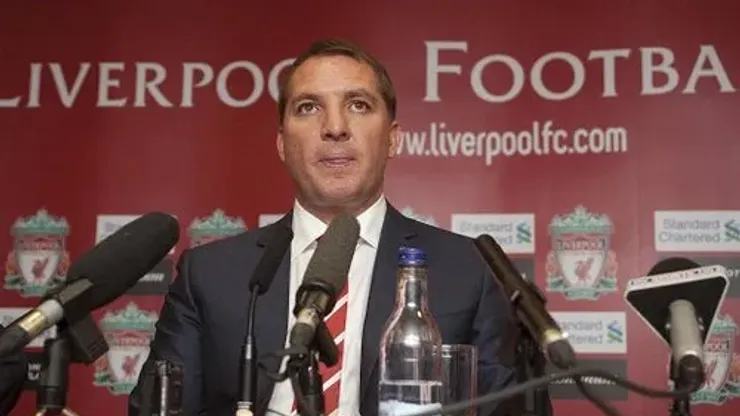I’ve written previously about my opinion on Brendan Rodgers’ hiring as Liverpool manager. Rodgers obviously has a clear and attractive footballing philosophy that appeals to fans, heavily influenced by the Total Football style of the Dutch and Spanish. The one point of worry for supporters may have been his rapid ascent, being placed in a big club with all its pressures before he’s fully developed the ability to think on his feet when things aren’t going well.
His failure to respond when Norwich City negated his most advanced midfielder and how uncomfortable Swansea looked when asked to play in any way besides the standard 4-3-3 supported the argument. However, despite the poor start to the season points wise, Rodgers’ Liverpool has shown the ability to remain unflustered and adapt to their surroundings. In their fixture last week against Young Boys, Jonjo Shelvey’s introduction added a directness to the midfield that helped break down the Swiss side. Bringing on a young midfielder for the winger Assaidi placed a focus on attacking through the middle rather than aimless crosses into the box.
Last Sunday against Manchester United, things were really going against Rodgers and Liverpool. Despite their unquestioned dominance in the first half the Reds entered the second a man down and with nothing to show for it. Considering the gravity of the occasion, it would have been easy for Rodgers to sit back in a 4-4-1 or 4-5-0 and claim a tough point at home. Instead he was proactive, with his substitutions offensive minded (Agger and Borini were forced through injury but Rodgers still managed to use the latter to his advantage).
Rodgers 4-3-1-1 formation during the second half was one of the best displays of football by a side with 10 men. Even Alex Ferguson conceded his side was second best, calling the performance poor. The strategy undertaken was a similar one used by Joes Mourinho during a Milan derby in 2010.
In that game Inter started with a 4-3-1-2 and Milan with a 4-3-3. Inter, just like Liverpool, dominated before the red card by virtue of overloading the central midfield. Wesley Sneijder and Luis Suarez both found joy between the lines. After the red card Mourinho kept the spine of his side intact with his 4-3-1-1, meaning Milan’s extra man did not apply in the middle of the park. The disadvantage was that the flanks were extremely free for the Rossoneri fullbacks to create overlaps with Beckham and Ronaldinho. However Mourinho asked his two advanced players to work the channels and occupy the opponent’s fullbacks while trusting that width was the worst part of Milan’s game. Lucio and Walter Samuel were also much better at dealing with crosses from wide areas than quick passing through the middle.
Brendan Rodgers asked Suso and Suarez to do the same thing as Milito and Pandev in that derby. Manchester United’s weakest areas against Liverpool were arguably their wide players, with Evra in horrible form and Ferguson forced to remove Nani to shore up midfield. The difference in the two games was that Mourinho’s side had a two goal cushion while Rodgers’ did not. This arguably made Liverpool’s display even more impressive, as they continued to press, despite being open to counterattacks down the flanks. The lack of a lead also meant that none of their midfielders could afford to sit comfortably and occupy Giggs or Valencia like Zanetti did for Mourinho. The second substitution of Sterling for Henderson meant that there were more fresh legs in midfield to keep pushing high up the pitch.
Some would say that the tactic backfired, as United’s non-contentious goal was scored by their right back Rafael. However, when trying to win the game with 10 men all one can do is play the percentages. That was a magnificent finish from the Brazilian and aside from that United created almost nothing, despite their wide players having no real direct opponent. Meanwhile Suso and Suarez were always joined in attack by midfield runners and linked together well.
The courage to throw the 18 year old Spaniard into the fray was symbolic of Rodgers’ attempt to create a braver, more flexible Liverpool. Suso completed 100% of his passes and linked perfectly with Suarez, Gerrard and Glen Johnson: Liverpool’s other offensive bright spots. Off the ball, he pressed high and worked the channels extremely well.
Early signs are encouraging for Brendan Rodgers despite the team’s league position. His media conferences are all hugely impressive, and it appears that he is still willing to learn and grow as a manager. His fast-tracking of youth and offensive substitutions are exactly what Liverpool fans want to see.
200+ Channels With Sports & News
- Starting price: $33/mo. for fubo Latino Package
- Watch Premier League, Women’s World Cup, Euro 2024 & Gold Cup
The New Home of MLS
- Price: $14.99/mo. for MLS Season Pass
- Watch every MLS game including playoffs & Leagues Cup
Many Sports & ESPN Originals
- Price: $10.99/mo. (or get ESPN+, Hulu & Disney+ for $14.99/mo.)
- Features Bundesliga, LaLiga, Championship, & FA Cup
2,000+ soccer games per year
- Price: $5.99/mo
- Features Champions League, Serie A, Europa League & Brasileirāo
175 Premier League Games & PL TV
- Starting price: $5.99/mo. for Peacock Premium
- Watch 175 exclusive EPL games per season






